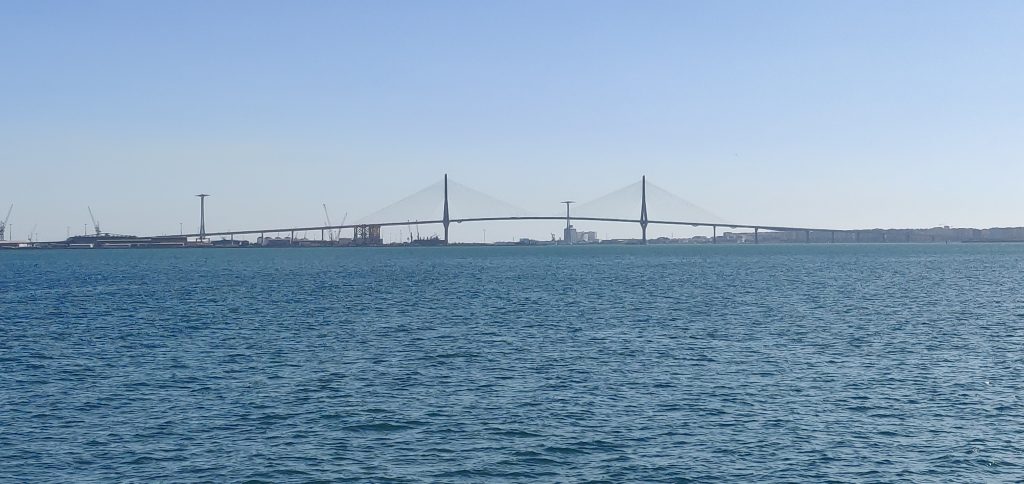We decided that on Day 2 we would catch the boat to el Puerto de Santa Maria. This leaves from the dock area near to where the cruise ships visit and the single price is less than 3 Euros. Today though, only one of the Catamarans was running and the outbound journey was via a bus.
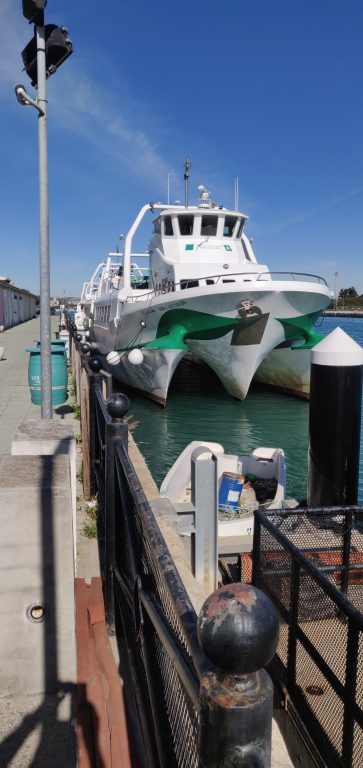
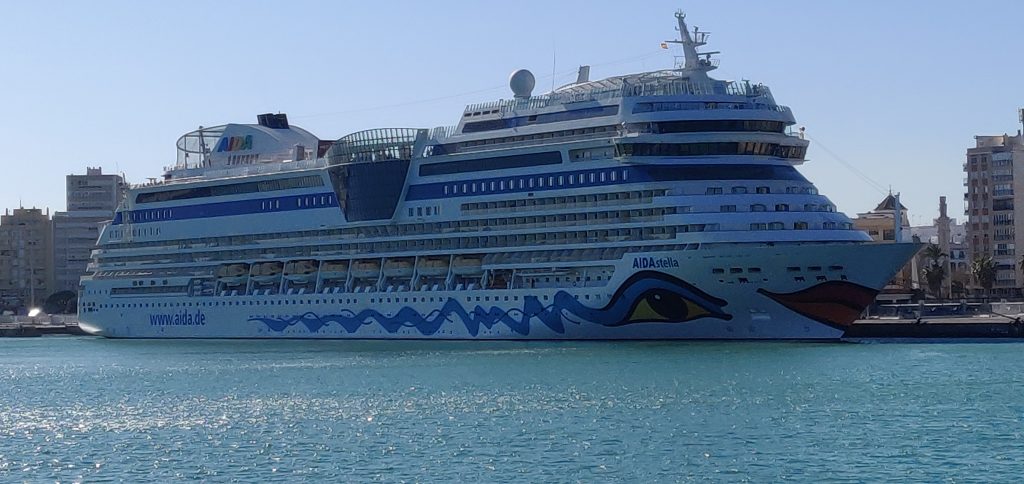
We arrived in el Puerta de Santa Maria late morning – the port know locally just as El Puerto and known by the British as Port Saint Mary – nestled on the banks of the Guadalete river.
In 711, Arab (Moors) from the North of Africa conquered southern Spain. They renamed the town Alcante or Alcanatif which means Port of Salt, due to the old salt industry of Phoenicians and Romans.
In 1260, Alfonso X of Castile conquered the city from the Moors and renamed it Santa María del Puerto. He organized the land distribution and conceded a charter under the Crown of Castile. Having received a royal charter the city was then allowed to use the title “El” prior to the name of the city itself. This is a distinguishing property and even though Madrid is the capital of Spain it has not earned this distinction.
Christopher Columbus’s first expedition to the Americas set sail from El Puerto de Santa María. His pilot, Juan de la Cosa drew his world map (the first including the coast of New World) in El Puerto in 1500.
In the nineteenth century the city became the General Headquarters for the French Army during the Peninsular War under the reign of Joseph Bonaparte (1801–1812). The town is steeped in history, museums and monuments.
Our first stop was the Castillo de San Marcos, a medieval castle. This was erected by King Alfonso X as a fortified church and it was built on the site of a mosque of which the wall of the qibla still survives.
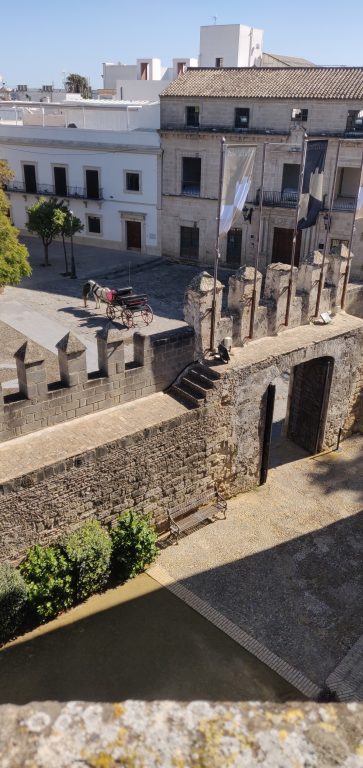
This room is the prayer area of the original muslim mosque, which itself had been built on Roman foundations and utilised the marble columns which are still visible today. The columns are original, but the soft sandstone used to construct them is attacked by humidity so mostly this has been clad is some kind of plaster / mortar render.
On one of the columns, can be seen the original stonework.
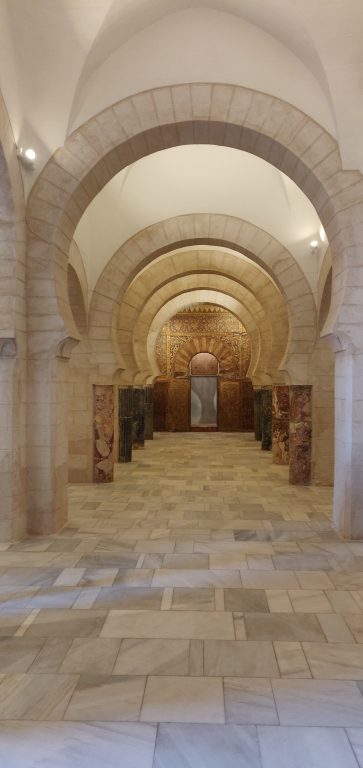
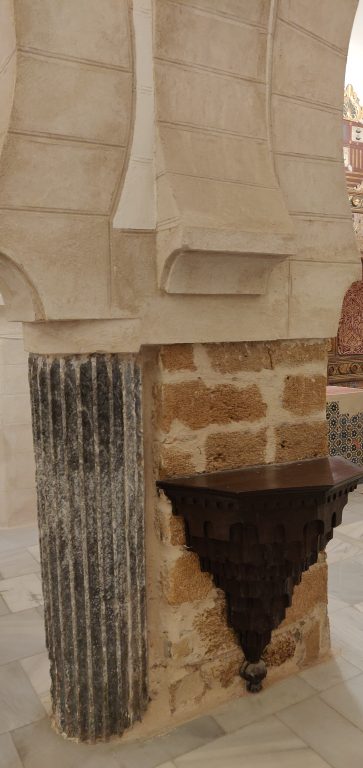
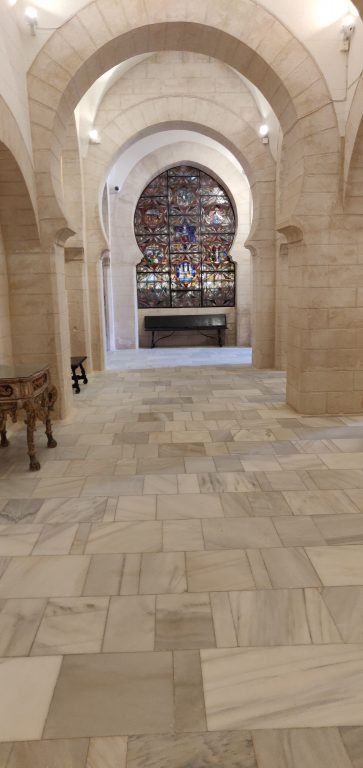
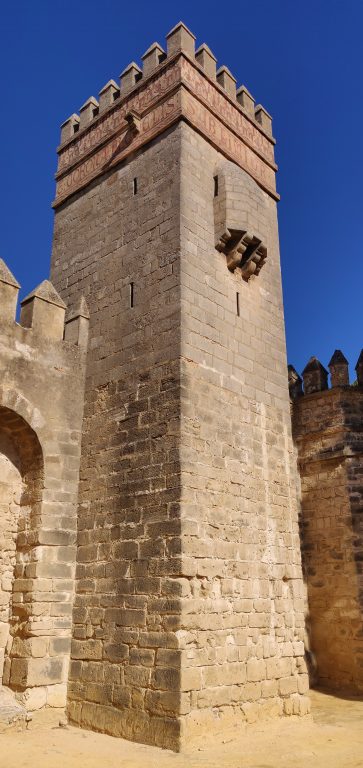
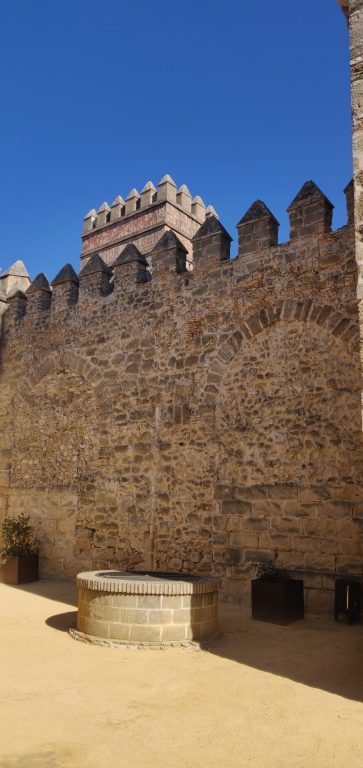
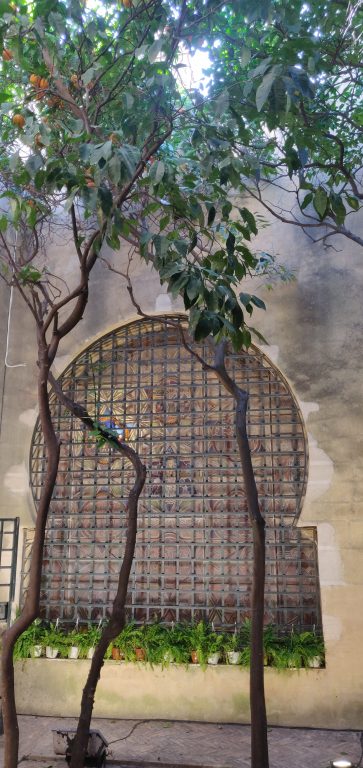
Lunch was a recommendation from one of the Spanish ladies at the Castle. “La Liba” was situated along the waterside of the Guadalete river. As often happens, although we only ordered small portions these turned out to be larger than normal Tapas. I guess there’s a lesson not to order it all at once!
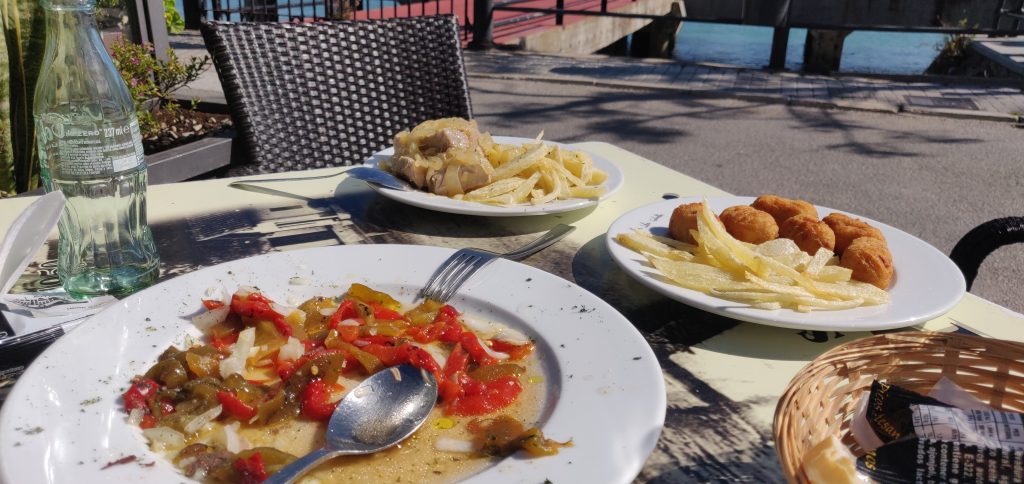
We then headed to the Plaza de Toros de El Puerto or, the Port of Santa Maria bullring. Today though was Tuesday, and many places are closed on Tuesdays. The arena is 99m in diameter with the central section measuring 60m and the bullring, one of the largest in Spain, with its capacity of 12,186 was, sadly, closed.
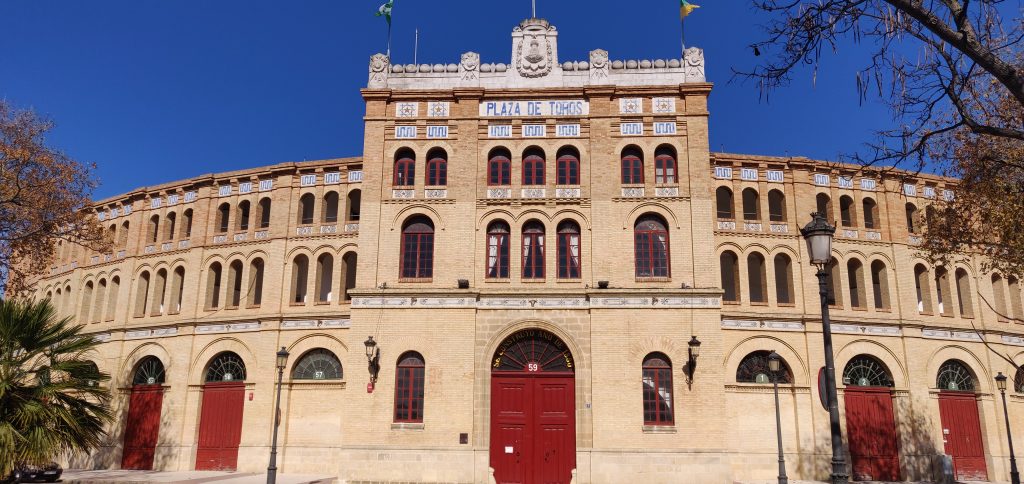
Late afternoon we caught the catamaran back to Cadiz and wandered around the old streets of Cadiz. We enjoyed nice views of the town of Cadiz and the “Constitution of 1812 Bridge” which opened in 2015 and has a total length of 3,092 metres. The bridge links the towns of Cadiz and Puerto Real.
